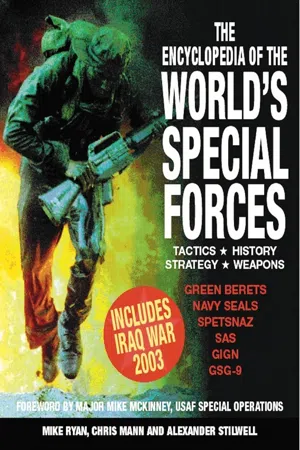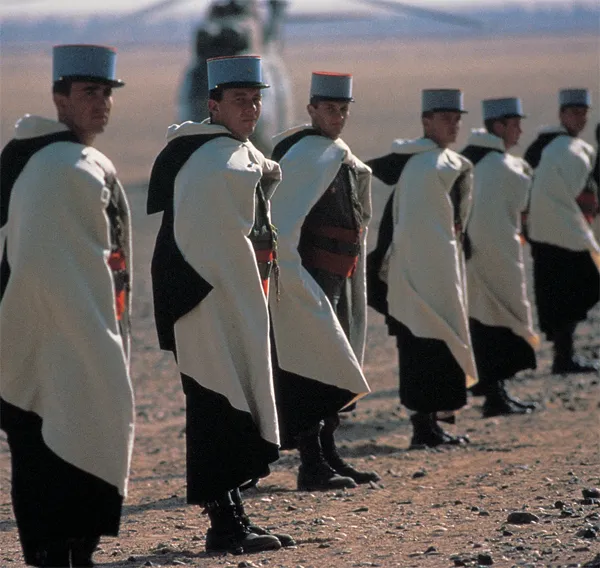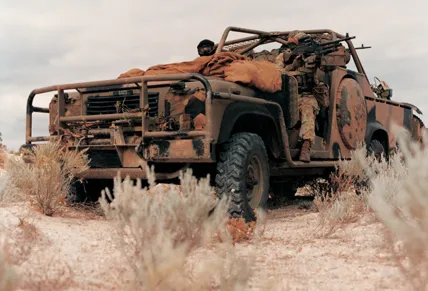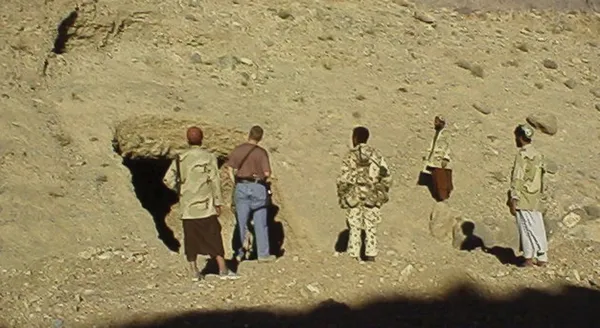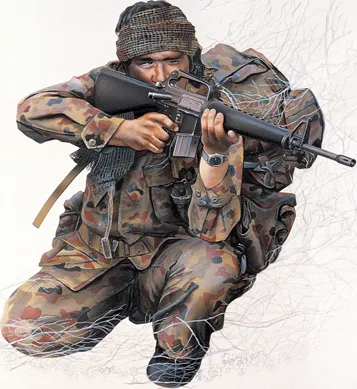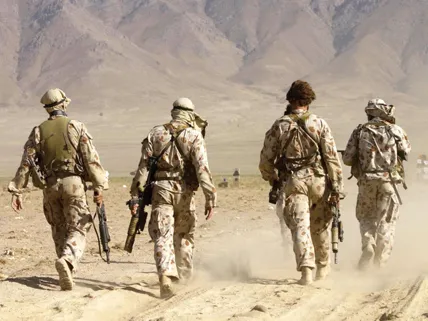ARG ARGENTINA
Brigada del Ejercito 601 and 602 Brigada Especial Operativa Halcon
Two army commando brigades and the dedicated anti-terrorist unit Brigada Halcon, under the control of the police, form Argentina’s special forces capabilities.
Argentina first set up a special forces capability with American assistance in the 1960s, with the formation of a commando brigade that was modelled along US Ranger lines. Known as Brigada del Ejercito 601, this force quickly gained respect amongst the Argentine armed forces, and this led to the formation of a second brigade, the 602nd. All members of the brigade undergo parachute training at the Catamarca Airborne School, and they crosstrain with other special forces units. The 601st saw action during the Falklands War (1982) on Mount Kent, where its members fought running battles with the British Special Air Service.
Standard equipment for the Brigada del Ejercito includes sniper rifles, assault weapons fitted with highquality night-vision devices, and very high-quality combat clothing.
BRIGADA ESPECIAL OPERATIVA HALCON
Formed in 1986 to combat terrorism, the Brigada Especial Operativa Halcon (Falcon Special Operations Brigade) is a police unit directly under the command of the Buenos Aires police department. With a make-up very similar to that of a military CRW team, the Brigada Halcon consists of 75 operators who are subdivided into five 15-man teams. Each team consists of two snipers, eight assaulters, one negotiator, an intelligence specialist, a communications specialist, a medic and an EOD specialist. Training comprises three two-month courses, which cover shooting, parachuting, offensive driving, sniping, intelligence gathering, use of explosives and helicopter insertion. In addition to its anti-terrorist role, the unit provides bodyguards for VIPs because of Argentina’s current state of economic crisis. The Brigada Halcon utilizes both localand foreign-manufactured clothing and protective gear.
Weapons include the Franchi SPAS 12 shotgun; Glock 17 pistol; and HK G3 GS/1 for sniping.
AUS AUSTRALIA
Special Air Service Regiment (SASR)
Australia’s SASR has a long and proud history dating back to fighting the Japanese during World War II. They are organized along the same lines as the British SAS, with whom they maintain close ties. The SASR recently saw action cooperating with US special forces in Afghanistan.
The Australian Special Air Service Regiment, based at Campbell Barracks, Swanbourne, has an operational strength of around 600 men and is made up of six squadrons – three Sabre, one signals, one operational support, one base – and a Regimental Headquarters (RHQ).
To ensure maximum operational efficiency at any given time, the three Sabre squadrons work on a three-year cycle, which provides both training and operational experience. In the first year of a typical squadron cycle, new recruits are processed and worked up, while more experienced troopers develop new skills and attend refresher courses. The second year of the cycle sees the squadron train for its overt military responsibilities, including special operations in conventional war-fare. This provides a good contrast to the third and final year of the cycle, which involves training for covert operations. The base squadron provides logistical and administrative support, while the SASR’s operational support squadron evaluates new equipment and provides specialist training for new tactics, techniques and procedures. In addition to this, 152 Signals Squadron (SASR) provides a highly capable communications network.
The SASR has a long and proud history. The first Australian SAS squadrons were formed during World War II to fight the Japanese behind their own lines, a task they performed with great success. After the war ended, they were disbanded in the same way as the British SAS and were not reformed until 1949. For three years, the unit was known as the 1st SAS Company and operated out of Swanbourne. In 1951, it was incorporated into the Royal Australian Regiment (RAR) as an airborne platoon; however, this arrangement was far from ideal, and, in 1957, it broke away to become the 1st Special Air Service Company. The unit quickly grew in size and capability, and in 1964 became the 1st Special Air Service Regiment (SASR), the title it holds to this day.
The SASR mirrors the British SAS in many ways, the two having worked together over many years, both in training and in combat. The strength of this special relationship was ably demonstrated in the jungles of Borneo from February 1965 to August 1966: British and Australian SAS troopers fought side by side against Indonesian forces in difficult and demanding conditions. This experience proved to be of immense value to the SASR, which soon found itself involved in another difficult operation in Vietnam, fighting in support of the US Armed Forces. The SASR originally deployed to Vietnam in 1962 as part of the Australian Army Training Team. As this controversial and increasingly unpopular war dragged on, it became necessary to raise another squadron in July 1966, which brought the SASR up to an operational strength of three Sabre squadrons. Up until 1971, the squadrons were rotated after each had completed two tours of Vietnam.
Above: SASR soldiers part of a peacekeeping force in East Timor secure a landing zone close to the border in 1999.
A well-armed Australian 6x6 Perentie LRPV shows off its impressive armament of two 7.62mm (0.3in) GPMGs.
A potential Australian SASR soldier takes a quick break during the individual endurance and navigation phase of the SASR’s selection course.
Above: SASR soldiers part of Operation Enduring Freedom search a cave in Afghanistan during a routine sweep-and-clear operation.
An Australian SAS trooper in standard camouflage uniform with a sweatrag wrapped around his head. He is armed with an M16A1.
The SASR developed a fearsome reputation: its troopers were known as tough and tenacious fighters who never quit, and the Viet Cong tended to avoid them.
After Vietnam, the SASR was forced to disband one of its Sabre squadrons. However, it was reformed in 1982 following a terrorist bomb attack on the Sydney Hilton Hotel on 13 February 1978. Within days of the attack, the SASR was formally designated the national counter terrorist unit and immediately set up the TAG/OAT groups as a reaction force. From 1982, the SASR expanded rapidly and soon found itself needing a dedicated signals squadron. In response, 152 Signals Squadron was formed and set about providing each Sabre squadron with a signals troop to enable better communications while on operations. The Gulf War in 1991 led to the deployment of one SASR squadron in support of the Allied Coalition force. This force of 110 men joined up with the New Zealand SAS to form the ANZAC SAS Squadron, which worked alongside both British and US special forces against Iraq.
SASR troopers against a mountainous backdrop in Iraq during the Second Gulf War. Note the lack of helmets in the heat of the Iraqi desert.
In recent years, the SASR has been involved in operations in East Timor, Afghanistan and Iraq, where they have performed superbly. First deployed to Afghanistan in 2005, they were redeployed in April 2007 as Special Operations Task Group (SOTG) ...
